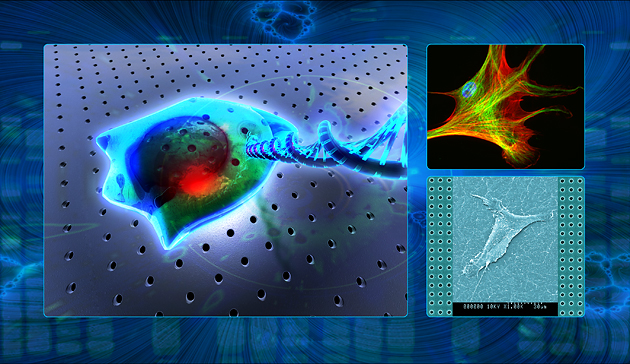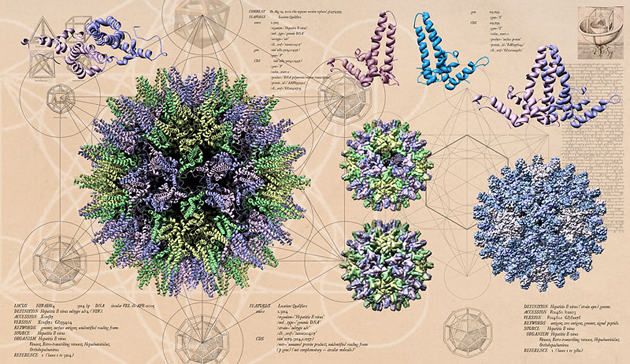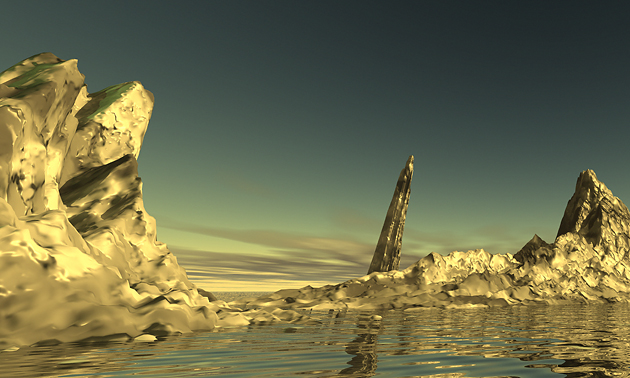

Observations - Jim Pattison and Murray Robertson |
 |
Glasgow Print Studio, first floor gallery Exhibition runs: 10th March - 15th April 2012 This exhibition features two artists who have strong links with GPS and who have independently worked on art/science/interdisciplinary projects over the past decade. The diverse range of subject matter and approaches explored by both Pattison and Robertson provides a unique insight into the nature of what has been described (not without contention) as 'art and science collaboration' over recent years and contributes to the ongoing debate about the relationship between both areas of knowledge. What characterizes the work of the participating artists is the thorough research and imaginative endeavour employed in its creation. The exhibition includes retrospective works and new work from projects currently in progress from each artist. A selection of images from the Glasgow Print Studio Gallery can be found here Above: Left - Murray Robertson, Predicted Structure (detail), digital print, 97 x 56 cm. Right - Jim Pattison, Channels (detail), digital print, 108 x 50 cm. |
Nanovisions (2005-07) |
 |
“In small proportions we just beauty see ” Ben Jonson The Nanovisions project showcases some aspects of nanotechnology - it is a blend of art, engineering and science. At the Department of Electronics and Electrical Engineering, University of Glasgow there are a three major research groups, nano, bio and opto electronics; their activities involve nano and micro technology including modelling, design, fabrication and characterisation of nanodevices. Robertson has used the visual material supplied by the University of Glasgow and other sources and has produced images, stills and animations based on this material. The result is a novel vision of a world of micro and nano features, normally below the edge of our perception, but fundamental to much of the past, present and future of the modern world. www.nanovisions.co.uk Above: Murray Robertson, Tissue Engineering, archival digital pigment print, 97 x 56 cm. |
Molecular Machines (2005-07) |
 |
Molecular Machines is a collaboration between scientists from the Medical Research Council - University of Glasgow Centre for Virus Research (CVR) and Murray Robertson, using images from virus research. The CVR employs state of the art molecular and structural biology techniques to investigate viruses, building knowledge that will lead to the development of more effective treatments for viral disease. www.molecularmachines.org.uk Above: Murray Robertson, HBV Architecture I, structure of the Hepatitis B Virus core and the geometry employed by viruses, archival digital pigment print, image size 84 x 48 cm. |
Visual Elements Periodic Table (1999 - 2012) |
 |
A collaborative project supported by the Royal Society of Chemistry which explores and reflects upon the diversity of elements that comprise matter in as unique and innovative manner as possible. This interpretation of the periodic table aims to produce a new and vibrant visual assessment of the startling diversity of material that constitutes the world in which we live, not simply by rendering images of the respective elements but also by investigating the manner in which they affect our daily lives in largely unseen and often unexpected ways. The table produced by Robertson is based on scientific data provided by chemist and science writer John Emsley. www.rsc.org/periodic-table |
Visual Elements Periodic Landscapes (1998 - 2000) |
 |
During the development of imagery for the Visual Elements Periodic Table it was emphasised by the participating chemists that because the table accurately predicts the properties of various elements and the relationships between properties, it provides a useful framework for analysing chemical behaviour. After a series of discussions held with Dr. Anne Prescott (Abertay University, Dundee) it was suggested that the entire periodic table could be therefore be ‘seen’ as a landscape (or landcsapes) and a series of computer generated views and models based on various patterns and relationships within the table could perhaps be visualized. The resulting images are generated from chemistry data using entirely digital resources. Two dimensional graphs of the various properties are transposed into 3D bar charts from which the values are rendered as greyscale height maps (where pure white is the highest point and solid black the lowest). These ‘maps’ are then imported into 3D modelling software and a fractal landscape generated from the respective values. Above: Murray Robertson, Ionization Energies, View VI, Periodic Landscape Series, archival digital pigment print, image size 166 x 100 cm. |
|
|